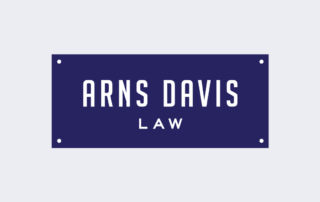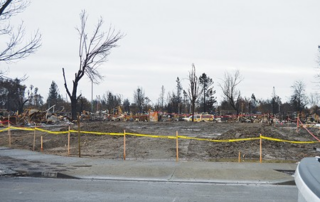Author: The Arns Law Firm
Facebook Litigation Privacy Rights Violations
Facebook's Sponsored Stories used the names, profile pictures, photographs, likenesses, and identities of Facebook users to advertise products and services without obtaining those users' consent. These ads were the subject of a lawsuit filed by in 2012 and a settlement was reached in 2013. Plaintiffs' Claims California law prohibits the use of a person's name or likeness in advertisements without that person's consent. The Fraley v. Facebook case claimed the social media giant was harvesting the "Likes" if its users and converting them into what appeared to be personal endorsements paid for by Facebook advertisers. Since these endorsements were never disclosed to the ...
Demanda alega que 150 trabajadores de North Pacific Red Salmon Cannery están detenidos en cuarentena forzada sin paga en el hotel Crowne Plaza LAX
Una demanda presentada hoy en el Tribunal Superior de San Francisco alega que por menos 150 trabajadores de fábrica de conservas están detenidos sin paga en el Hotel Crowne Plaza LAX. La demanda alega que la mayoría de los trabajadores son adultos jóvenes de México y partes de los Estados Unidos que están obligados a permanecer en sus habitaciones durante 14 días, se les proporcionan sólo dos comidas y se les prohíbe acceder a los servicios del hotel. La demanda alega que el 2 de junio de 2020, estos futuros trabajadores de fábrica de conservas de México y otras partes ...
LAX Quarantined Cannery Workers Reach Resolution with Red Salmon / North Pacific Seafoods
The North Pacific/Red Salmon Cannery workers held last month in quarantine at an LAX hotel announced a settlement of their lawsuit filed against North Pacific Seafoods for unpaid wages, the failure to follow Covid testing and quarantine protocols and false imprisonment. The settlement is valued at more than $440,000 and will be paid out on a pro-rata basis to the 165 workers. The suit alleged that on June 2, 2020, prospective cannery workers from Mexico and other parts of the United States were directed to travel to the Crowne Plaza LAX Hotel. The workers were informed they would be tested ...
The Arns Davis Law Settles North Pacific / Red Salmon Cannery Lawsuit
announced today that the North Pacific/Red Salmon Cannery workers held last month in quarantine at an LAX hotel have settled their lawsuit filed against North Pacific Seafoods for unpaid wages, the failure to follow Covid testing and quarantine protocols and false imprisonment. The settlement is valued at more than $440,000 and will be paid out on a pro-rata basis to the 165 workers. Any workers seeking more information on the settlement should call at (415) 495-7800. To view the press release covering the settlement, click here. For the original press release regarding the lawsuit, click here. News Coverage ...
Settlement Reached in North Pacific / Red Salmon Cannery Lawsuit
announced today that the North Pacific/Red Salmon Cannery workers held last month in quarantine at an LAX hotel have settled their lawsuit filed against North Pacific Seafoods for unpaid wages, the failure to follow Covid testing and quarantine protocols and false imprisonment. The settlement is valued at more than $440,000 and will be paid out on a pro-rata basis to the 165 workers. For more information on the settlement, click here.
Opt Out of Arbitration Agreements to Protect Your Right to a Jury Trial
If you live and work in America, you've probably signed away your right to bring a legal action in court against your employer, your cell phone or cable company, your parents’ nursing home, or any other big institution in your life.[i] Instead, you've probably agreed to private, binding arbitration.[ii] But even though you've signed this arbitration clause, there may still be a way to avoid arbitration and reclaim your right to sue in court. What is Arbitration? Examine the last “terms of service” you accepted, and you will likely find a clause agreeing to waive your right to bring a ...
The Pitfalls and Risks of Modified Duty
What Is “Modified Work” Under California's Workers’ Compensation Law? The definition of “Modified Work” is set out in CA Code of Regulations, Title 8 Ch. 4.5 Division of Workers Compensation Section 10116.9 as follows: (h) "Modified work" means regular work modified so that the employee has the ability to perform all the functions of the job and that offers wages and compensation that are at least 85 percent of those paid to the employee at the time of injury, and located within a reasonable commuting distance of the employee's residence at the time of injury. The Pros of Modified Duty ...
Northern California Wildfire Debris Removal Suits Filed
The Bohemian Two contracting companies that cleared fire debris in the North Bay last year have been defrauding the federal government on contracts across the country since at least 2015, a lawsuit filed last week alleges. AshBritt Environmental, one of the two companies named in the suit, recently hired local media magnate Darius Anderson to lobby for its interests in Sacramento. Sonoma County recently hired a former employee of the other company, Tetra Tech, to oversee the county's emergency-management response. Disaster-recovery players such as Anderson have highlighted, in public statements, the necessity of public-private partnerships to fully recover from the ...
Arns Davis Law Files Lawsuit Against BART on Behalf of Family of Nia Wilson
From the San Francisco Chronicle Just days after BART kicked off a security blitz aimed at curbing fare evaders, the family of a woman killed last year on an Oakland station platform has filed a wrongful death lawsuit against the transit agency, saying its latest efforts are too little, too late. The suit alleges that heightened security could have spared the life of Nia Wilson, an 18-year-old woman who was fatally stabbed in the neck at the MacArthur BART Station. Her alleged killer, John Lee Cowell, 28, was a serial fare evader and should have never gained entry, the family’s ...
Arns Davis Law Will File Complaint against BART for Stabbing Death
is preparing to file a lawsuit on behalf of the family of Nia Wilson, the woman tragically killed the night of Sunday, July 22, 2018, against Bay Area Rapid Transit (“BART”). The suit will allege BART failed to meet the duty of common carriers to provide riders with the highest standard of care. According to reports, Nia Wilson, 18, and her two sisters Letifah and Tashiya, were boarding a BART train car at the MacArthur BART Station when John Cowell, an apparent fare jumping transient slashed Nia across the neck, and stabbed her sister, Letifah, before fleeing. Nia’s ...


